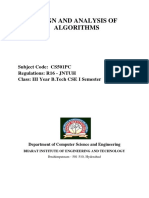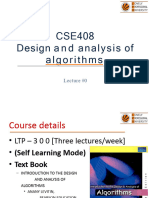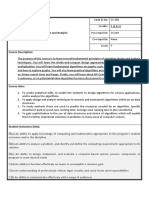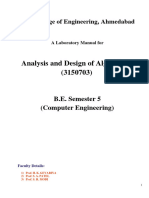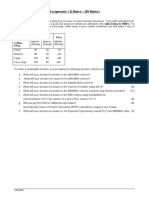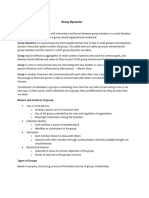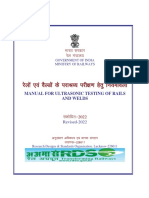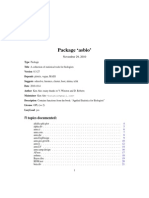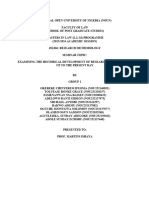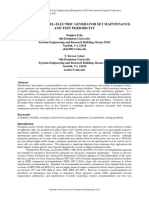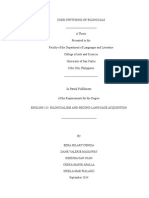0% found this document useful (0 votes)
28 views15 pagesConverted 6137654
The document outlines the course details for 'Design and Analysis of Algorithms' (UGCSE301) offered by the Computer Science & Engineering department, including course objectives, outcomes, and a detailed syllabus. Key topics covered include algorithm design techniques, data structures, and complexity analysis, with a focus on practical applications in various engineering contexts. The course aims to equip students with the skills to analyze, design, and implement efficient algorithms for complex problems.
Uploaded by
chain9127Copyright
© © All Rights Reserved
We take content rights seriously. If you suspect this is your content, claim it here.
Available Formats
Download as PDF, TXT or read online on Scribd
0% found this document useful (0 votes)
28 views15 pagesConverted 6137654
The document outlines the course details for 'Design and Analysis of Algorithms' (UGCSE301) offered by the Computer Science & Engineering department, including course objectives, outcomes, and a detailed syllabus. Key topics covered include algorithm design techniques, data structures, and complexity analysis, with a focus on practical applications in various engineering contexts. The course aims to equip students with the skills to analyze, design, and implement efficient algorithms for complex problems.
Uploaded by
chain9127Copyright
© © All Rights Reserved
We take content rights seriously. If you suspect this is your content, claim it here.
Available Formats
Download as PDF, TXT or read online on Scribd
/ 15
